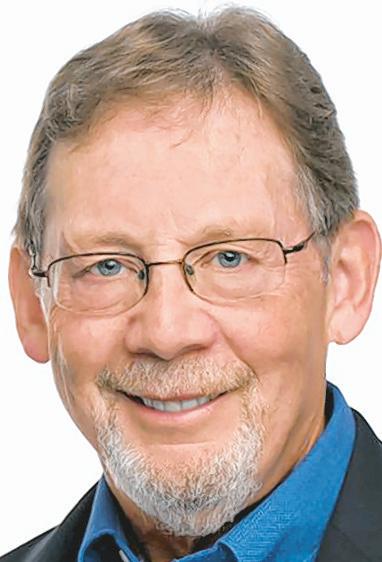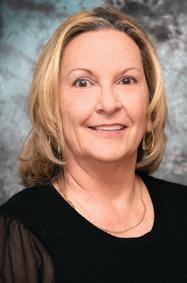






“Imagination” perfectly captures the essence of what unfolds within the walls of the Sun City Ceramics Club Studio, a place where members transform clay into remarkably fine ceramics of every kind. The club’s President, Linda Closson, who has “always been involved in arts throughout my life,” thoroughly enjoys her involvement. She joined the club open exclusively to Sun City residents three years ago after moving to Sun City nine years ago. Currently, the club boasts 375 members, and Closson happily notes, “New members are always welcome to join.”
For those new to ceramics, the club is an inviting place to start. Membership includes free access to various classes, including those catering to beginners eager to learn the craft of molding clay into diverse objects like bowls, platters, vases, teapots, teacups, and more artistic pieces such as nativity scenes and fish—anything one can “imagine.” Closson remarks that the club benefits from the rich backgrounds of its members, some have owned studios, managed retail stores, earned master’s degrees in arts, or taught, and they are “sharing all of their experience with us.”
Closson points out there are members who are “very good sculptors,” adding that everything is “either hand built or built on a wheel.” Hand build-
ing involves starting with “a little ball of clay is rolled out so the member can make something out of it. Building on a wheel also happens in the studio at several stations where members creations are made by spinning into shape, usually a bowl or something like that,” she explained. The studio has five kilns that are available and normally “fired 3 times a week at a minimal cost to members.”
Closson further explains, “The club offers for sale to its members clay and glazes, and we have a wide range of tools available for use in the studio.” She advises members to purchase any additional tools they need via the internet or local stores, as the club does not sell tools. Additionally, the club hosts engaging workshops monthly to enrich the member experience.
On the first Saturday of each month, the studio opens to the public from 10 a.m. to noon, offering for sale various ceramic items crafted by its members, including coffee cups, sponge holders, flower vases, and wine glasses, plus more. Beyond crafting, the club is also a lively social center. Members enjoy sharing their skills in the studio, and the club organizes festive activities like Christmas parties and general meetings, often featuring outdoor ice cream socials. Closson enthusiastically invites everyone, saying, “Come and join us. You’ll have a lot of fun.”

It’s that time of year again. Our air conditioner s are working over time and we’re doing ever ything we can to stay c o o l .
Just about ever yone uses more electr icity dur ing the summer months particularly in South Carolina That’s why Palmetto Electr ic Cooperative is giving you a few tips t o h e l p use electr icity wisely.

Visit w w w. p a l m e t t o . c o o p or scan here for more energ y savings tips.

• Have your A/C system serviced.
• Clean or replace air conditioner filters regularly
• Close drapes, blinds and shades during the hottest part of the day.
• Set your ther mostat to the highest temperature setting at which you’re comfortable. The recommended setting is 78 degrees every degree below this setting will add about 5 percent to your cooling costs.
• Use ceiling fans to feel more comfortable.
• Consider a SMART ther mostat that can be programed to automatically adjust when you ’ re not home or sleeping



One year, my next-door neighbor suggested we vacation with them at a resort in Panama City, Florida. They had been there a few times before. She spoke highly of the place with great enthusiasm. We would each have our own complex. Our meals
would be prepared daily. A cleaning service would make our beds and change out the linens each day. It sounded great! Even something a mother might enjoy.
Our family of five piled into the car and drove the eighteen hours from dreary Michigan to the warmer climate. Needless to say, it was a long trip while trying to keep three
young children entertained. There were a lot of tears, temper tantrums and pouting. But two days stuck in a car, with three preschool children, was going to be rewarded with a much-needed vacation.
Upon arrival the other wife immediately wanted to go grocery shopping. When I questioned her as to “why” she then in-
formed me that we had to prepare our own meals. There were no meals provided. So, as the mother of this clan, I spent a good portion of each day making beds while also preparing breakfast, lunch and dinner. I was sweeping up sand three times a day. It ended BIRDS


up that there was no maid service either.
The kitchen had no dishwasher, so that was yet another inconvenience. I was hand washing dishes after each meal. Two of the children were bedwetters. Each day, I would strip beds and haul bedding to the local laundromat. For me, it was nothing but the normal household chores along with meal preparations, while having none of the conveniences of home. Needless to say, it was a terrible vacation for me!
On the return trip back to Michigan the kids once again became restless. The fights began with a child wailing, “He’s sitting on my side. He’s touching me!” Followed by more tears, temper tantrums and slapping one another. I kept correcting them, but they were too far gone. They weren’t even listening at that point.
Their father was quietly driving. He’s a very calm man. Finally, even he was overcome by the commotion going on in the back seat. He calmly told each of them to take off their jackets and place them over their heads.
I quizzically looked at him. His response
was that when our Double Yellow Headed Parrot started her screaming, we‘d cover the cage until she’d quiet down. So, his thought was to cover these “little squawkers” until they became quiet. It worked! Not a peep out of any of them.
However, I had to laugh as cars passed us on the Interstate. They’d stare into our vehicle. They’d even slow down so they could get a second glance. Laughingly they’d point out, to their driver, the three little covered “birds” in our back seat. It actually turned into a very peaceful trip. From that day forward we never had any problems with children fighting in the car.
My husband and I pretty much never vacationed after that. A few times we took a cruise, but we did not take the children. We hired a sitter so that “the mother” could actually get an enjoyable vacation. The cruise line made our bed along with preparing three delicious meals daily. I never had to lift a finger, and I felt pampered. This is the kind of vacation every mother deserves!


$472,500
Popular Dogwood with peaceful wooded setting awaits your personal touches. This home boasts large living area w/Carolina room, den, eat-in kitchen with lots of cabinets, granite counters, prep island, laundry room with sink. Primary bedroom with walk-in closet,






With a great deal of foresight in 2000, Del Webb installed 54 garden plots under the power lines that cross Sun City property, land that would otherwise be useless and the “Okatie Farmers Club” was created. Since that time, plots have increased to 322 in three separate locations, and countless residents have reaped the delicious rewards of growing their own vegetables – virtually year-round. Growing seasons in the south are different, and it’s a learning curve to master gardening twelve months of the year but well worth it. Summer crops include tomatoes, zucchini and cucumbers. Winter crops are broccoli, cabbage, cauliflower and brussel sprouts. Many vegetables can be grown in the winter when pests are not as numerous.
On a tour one spring day, Todd Wilson, who is a former Kentucky tobacco farmer,
talked about his gardening experience over the last eight years. He was joined by Al Thompson, a Master Gardener, who explained how carefully his plot is managed.
Lillian Guenther, who has had a plot since 2008, commented “The vegetables I grow are fresh, organic and better for you than store bought. Gardening is a learning experience, with a big social aspect. It provides me with exercise, inner peace and plenty of vitamin D!”
There are five community gardens, and each week harvested food is donated to Bluffton Self Help through the efforts of over 20 volunteers who plant, manage and harvest the gardens. These community gardens were started in 2017 in memory of Jim Ennis, who was the club’s first president. Individual gardeners also donate their surplus produce.










Sun City Women Who Care photo taken 5/24 with Executive Director Jackie O’Bannon who accepted the donation of $18,100 for Antioch Educational Center (AEC) located in Ridgeland. They provide basic human service needs to low-income families. Some of the members who joined in the presentation were: Rosalie Simmons, Vicki Galbraith, Jean Wehrung, Mary Cale the nominator, Joan Kelly, Carolyn Hubers, Vicki Mack, Mary Lou Beavers, Elaine Garcia, Susan Conover, Jackie O’Bannon, Nancy Hill, Karen Meyer, Kate Crowley, Judy Young, & Sharon Lang. Photo by Elizabeth Gawrysiak.








Because the gardens are under power lines, there are restrictions on what can be built and used in the plots. Weeds and pests can spread quickly, so club inspections help gardeners keep these in check. The club hosts plant sales at the Pavilion each spring and fall when members can buy plants from Jasper Feed and Seed in Ridgeland.
Sun City Community Association provides water from the lagoon near the Nature Trail. Sun City staffers Janie Parrish, Tammy Hayes and Edward Brown are supportive of the club. Edward maintains the roads and common grass areas within the gardens. Bartlett Tree Experts provide free wood chips that members can use to control weeds.
Because bees are necessary for proper pollination, beehives are kept in the gardens, watched over by Sheryl Cress and club president, Phil Darby. Sheryl has been a beekeeper for 20 years, starting with her son when he was a teenager. There were no hives in Sun City until she


Sun City’s Yemassee Craft Center will continue its monthly First Saturday Sales at Town Square through July and August. The events will be open from 10 a.m. to noon, showcasing the creative works of several clubs, including All About Art, Photography, Sew What Stitches & Crafts, Glass Crafters and Ce-
ramics.
Visitors will have the opportunity to view or purchase the unique creations of these talented members.
In July, Sew What Stitches & Crafts will feature a special “Christmas in July” theme and extend their hours until 12:30 p.m.
installed them when she moved here three years ago. At first, the bees were not doing well, and it was thought Beaufort County spraying for mosquitoes in the area was the cause of their decline. The hives were moved to another location and the bees have been thriving ever since.
In the wild, bees function very well, but in captivity, a beekeeper must care for them, and it is a complicated process. Though she has been stung a few times, Sheryl said “This is the love of my life. It amazes me what bees can do.”
Ready to try your hand at vegetable gardening? Membership in the Okatie Farmers Club is $20/year and gets you a garden plot, available water and free mulch. Also, great mentoring is available from more experienced members.
For further information, see Okatie Farmers Club under Chartered Club News in Sunsations or email okatiefarmersclub@gmail.com.


Looking for a fun way to stay active and beat the heat this summer in Sun City?
Consider joining the Table Tennis Club, a popular choice among residents seeking to play for fun, learn the sport or compete with peers at their skill level. Sun City’s Table Tennis Center boasts three regulation tables in an air-conditioned space, ensuring comfort during play.
Club President Ronnie Metcalf moved from his hometown of Louisville, Ky., to Sun City seven years ago and has been a devoted member “since day one.” Metcalf, a lifelong table tennis enthusiast, shares “Table tennis is my wife’s and my passion and always has been. It is our go-to sport and number one sport.” He fondly recalls how the sport played a crucial role in meeting his wife, Brenda. They both also play tennis and pickle ball.
Currently, the club boasts about 220 members and continues to grow, welcoming two to three new enthusiasts each month. Together with Vice President Dan Costanza, Metcalf leads monthly orienta-

opportunities for single play, and “open” time slots to encourage participation from non-member residents of Sun City to play along with their guests, enriching the community spirit.
The club also offers clinics mostly run by Costanza, an advanced player, who offers serving clinics, backhand, forehand, driving the ball, cutting the ball and more. “He really does a great job with that,” says Metcalf, noting the clinics significant role in enhancing members’ skills. The club even features a ball machine available every Wednesday, which members use to hone their techniques—a testament to the club’s commitment to skill improvement and enjoyment.
tions every third Wednesday. These sessions detail the club’s structure and introduce four skill levels: beginners, novices, intermediates and advanced. He highlights that the club predominantly consists of novices and intermediates, with
each new member evaluating their own skill level.
He said the Table Tennis Schedule is strategically designed to cater to all skill levels, enhancing interaction among players. It includes specific times for doubles,
Metcalf said they adhere to the USATT (United States of America Table Tennis Association) rules, although the club currently focuses on “social play” rather than competitive tournaments, based on member preferences. He remarks, “Some people come into the Table Tennis Center who have never played before and just hit the ball back and forth and have a blast. That is what we try to tell everybody-just have fun!”




There are usually two different agents in a real estate transaction; a listing agent who represents the seller and a buyer’s agent who represents the buyer.
In the old days, the primary job of the buyer’s agent was to help the buyer find the home that best fit their needs and wants. However, in today’s world, most buyers find their dream home (or homes) online on their own.
They then find a real estate agent/buy-
er’s agent to:
• Show them those homes
• Determine home values
• Assist with what price to offer
• Advise on what terms to offer
• Prepare and submit offers
• Handle all negotiations
• Coordinate home inspections
• Handle all the required paperwork
• Keep the transaction moving along
• Expedite the closing process But do they really need a buyer’s agent to buy a home? No, they do not! It depends upon how knowledgeable those home buyers are. Home buyers are not legally required to hire a real estate agent in order to buy a home.
Home buyers always have the option to
find a home and negotiate the terms of the purchase on their own. They could use the listing agent (and be a customer instead of a client) to show them the home, prepare and submit the offer, and handle all the paperwork.
Here are some other things to think about when buying a home:
• When you buy a home, the seller pays a commission to both the listing agent and the buyer’s agent
• If the home buyer does not use a buyer’s agent, maybe they could negotiate a better price and/or terms
• Down the road a bit, home sellers may not offer compensation to real estate agents who bring in the buyer
• If and when that happens, it is probable that buyer agents will have to be compensated by the home buyers
• Buyer agents do offer a lot of value and they may have to negotiate remuneration with their home buyers
• I am seeing more home buyers negotiating directly with listing agents
According to the National Association of Realtors, in 2023, an overwhelming 89 percent of buyers chose to hire a real estate buyer’s agent to assist them with the home-buying process. That percentage will probably decrease in 2024. Questions and/or comments? Feel free to contact me anytime.
Larry Stoller is a local Broker and Realtor with Real Estate FIVE of the Low Country. He sells homes throughout the Bluffton and Hilton Head area. Larry@ RealEstateFive.com, www.RealEstateFive. com.








Establishing an endowed scholarship at the University of South Carolina Beaufort is personal for Colonel Wallace Hollinger. The US Air Force veteran and longtime Sun City resident is honoring the memory of his late wife, Gerda, by supporting students pursuing international studies.
“It is a natural fit for us,” he said.
Wallace is Canadian by birth, and Gerda, who passed away in 2022, was German. Their story spans decades.
When Wallace met Gerda Wallace met Gerda in 1952. He was working at a small engineering company and attending night school at New York University. One very special morning, he says, Gerda came in to interview for a secretarial position with the company’s treasurer. She quickly got Wallace’s attention.
“She was wearing a white sweater and a straight-line grey skirt,” Wallace recalls.
At the time, he happened to have two tickets to a Broadway show, so Wallace asked Gerda if she would like to go to the theater with him. He says the chemistry between them was so great that two weeks later, on their second date, they decided they should go through life together. That was the beginning of their 70-year shared journey.
In 1952, the United States was engaged in the Korean police action, and Wallace had already received a letter from his local draft board when he met Gerda. He joined the United States Air Force and launched a 24-year career spent mostly flying transport aircraft around the world.

Wallace saw a lot of the world from the cockpit of a C-124 transport plane. He clocked 5,000 hours in that aircraft, and 10,000 total hours, flying for the Military Air Transport Service. During his military career, Wallace went to Vietnam, Thailand, Kenya, the Congo, Brazil, Greece, Turkey and many other countries in the Middle East, Africa, Europe and South America.
“We flew for the Air Force, the State Department, for any governmental agency that needed cargo quickly delivered to any place in the world,” he said. “I have been in almost every country in the world.”
Gerda’s War Story
One of the many countries Wallace visited as a pilot was Gerda’s native Germany. Born before World War Two, Gerda lived with her aunt and uncle while her mother was learning English and looking for work in the United States. The plan was for Gerda to join her mother, but world affairs intervened. By 1937, when Gerda was still an infant, Germany had closed its borders and she could not leave the country.
Gerda spent most of the war in Augsburg, the home of a major ball-bearing manufacturing company repeatedly bombed by the Allies. To protect the children, the citizens of Augsburg relocated them to families who lived in rural areas and away from the city. Gerda went to live with a cousin in the eastern part of Germany.
That is why the Hollinger scholarship at USCB is specifically for students who share the family’s desire to promote mutu-
al respect between people of different countries, origins and ethnicity.
“We live in an integrated
world,” Hollinger said. “And there’s nothing more important than people learning to get along with each other.”
Unfortunately, that area eventually became part of Russian-occupied East Germany. The first action taken by the
Russians was to evict German families from their homes and move in Russian soldiers. Homeless, Gerda and her cousin started walking westward. After a few days, Russians rounded up the Germans, placed them in train box cars and told them they were going to Siberia.
Thrown into a slow-moving box car, Gerda endured grueling, cramped and unsanitary conditions for days. Night after night, guards lined up Gerda and the other refugees and pretended to execute them. Instead of firing directly at their prisoners, the Russian soldiers would fire bullets over their heads.
At the end of this grueling trip, the Russians released their prisoners into Germany’s Western Zone, not Siberia. Away from her captors, Gerda was able to contact her family and her favorite cousin brought her back to her family in Augsburg.
Gerda was 11 years old and had no recollection of her mother living in the United States. She was with the only family she knew, so when her mother sent for her, Gerda resisted. Her aunt and uncle had to convince her to go to the United States with the promise that if she did not like it there, they would bring her back to Germany.
Luckily for Wallace, young Gerda did like life in the U.S., but she never forgot her roots.
“Gerda’s painful childhood war story had a profound effect on her adult life and her family,” Wallace said.
As her daughter Cyndy, who also lives in Sun City, tells it:
“Mom was so skinny; she and her little friend would crawl under fences and deliver notes back and forth to the priest to let everybody know they were OK.”
Cyndy also remembers her mom telling her how as a young child, she saw a playmate blown up during an Allied bombing attack.
“Mom lived through the Second World War, I mean hands-on, and that is why international studies was so important to her,” explained her son Don, who lives in Pooler, Ga.
In this close-knit family, Cyndy and Don are also inspired and influenced by their dad’s story.

he was enrolled in the aeronautical engineering program at New York University’s night school. At 18, he received that draft board letter to serve in the Korean police action.
“Uncle Sam tapped me on the shoulder,” Wallace recalls. “I said I don’t do trenches.”
While waiting for a spot in the Air Force’s pilot training program, Wallace took the opportunity to earn ratings as an observer, navigator and aircraft performance engineer. He went from being a reserve officer to regular officer. In 1976, after flying around the world in service to his country, Wallace retired as a full Colonel.
“I figured that I had a pretty successful military career, and could have stayed in for the star,” he recalls, “but I wanted to try my luck at having a civilian career.”
That second career, spanning 23 years, was working in risk management for an insurance agency in Savannah, Ga. Wallace also taught risk management and insurance to business and community leaders, including his daughter Cyndy.
In 1999, Wallace retired for a second time, three years after moving to a new community being built near Bluffton.
In Sun City, Gerda and Wallace started the next chapter of their life that included a family environment filled with two adult children, several grandchildren, service to their new community and a commitment to higher education.
According to Wallace, he and Gerda have educated all their grandchildren through master’s degrees and are waiting to educate their 10 great-grandchildren. Their generous support of higher education now also includes USCB students.
Wallace and Gerda witnessed firsthand the precarious state of world affairs in the mid-20th century. Now, their legacy includes helping future generations of students at USCB study and experience other countries in the hope of making the world a better place to live and raise a family.
Wallace’s childhood was quite different from Gerda’s. His family moved to Atlanta
from Toronto, Canada, in 1945 when his father was transferred for work. Wallace zipped through middle school in one year and started ninth grade at age 12. By 16,
For more information on establishing an endowed scholarship at USCB, or making a charitable donation, contact Tim Daniels, assistant vice chancellor, at 843208-8258 or tdaniels@uscb.edu.

















